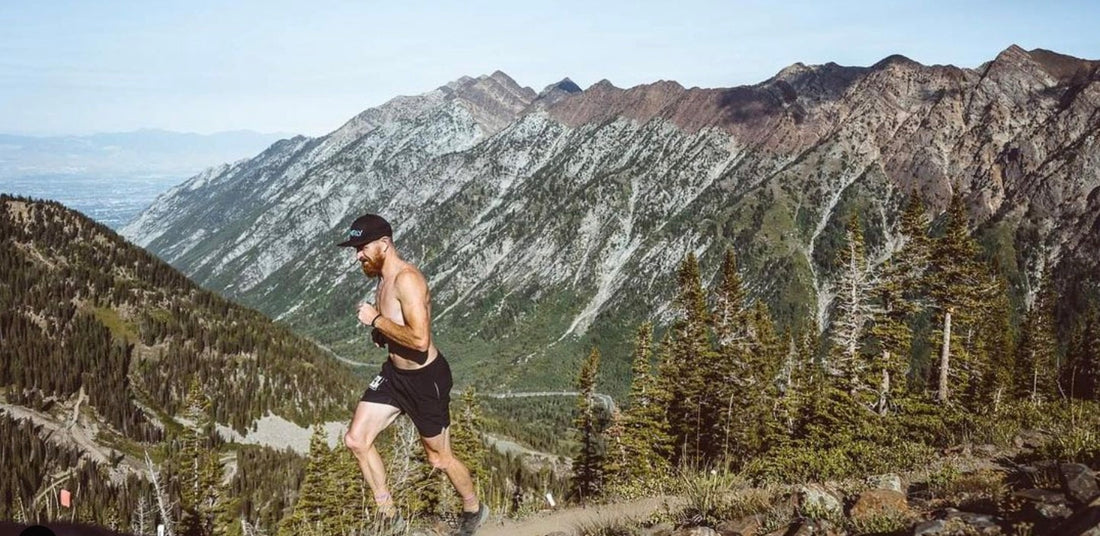Interview by Tyler Marshall
When I think of Eli Kerr, two words come to mind: Life, and flow. The day of our interview, I entered the shop late. He saw me and stood up. As we walked towards one another I extended my hand, and he reached around my arm for a hug. Our conversation proceeded in a similar manner: warmer, and more invested than I’d expected.
Eli Kerr is one of the founders of Gnarly, a nutrition company based in Salt Lake City, Utah. Gnarly began in 2012 in a market oversaturated with workout nutrition and supplements. Eli and his team recognized an untapped niche: nutrition aimed at the outdoor/mountain athlete.
Eli smiled, and noted that mountain athletes are [in]famous for a certain duality — they have a reputation for amazing fitness levels earned through grueling work traveling through, around, up and down mountains. But they also have a reputation for ignoring recovery. Gnarly would find its home in addressing this latter issue.
Eli spent 10 years working as a therapist in the mental health industry, and learned to care deeply about helping people better themselves. Eli maintains that the entire company is absolutely focused on adhering to that vision of aiding in self-improvement. “Our products help people to empower themselves. Recreating in the outdoors helps people to experience what’s out there. It’s all about getting outside, and opening that inner-channel.” After saying this, Eli asked me if I know what the theory of flow is. He explained, “It’s where the challenge meets the skill set. When we find this, it leads us to be happier, more fulfilled, and more creative.”
Regarding flow, Eli also stated, “I believe that outside creates opportunity for flow. But, it can also occur in an art studio, a gym, in writing, or even your day-to-day work. Creativity solves problems. In this way, [Gnarly] wants to be something different in the sports nutrition industry.”
Eli also noted other ways in which Gnarly is unique.The supplement/nutrition business is driven by plastic packaging. It’s convenient; it’s cheap; it sells. If these things aren’t the proverbial “broken,” then why fix them? Right?
Wrong.
Gnarly uses steel containers. This is because they estimate that steel is recycled up to 70% more than plastic. On this difficult transition from plastics, Eli said, “We’re a small boutique brand, but we’ve gone out to do something about sustainability. With the switch, we lost customers. While it was risky, it was right. There’s not a lot of life to microplastics. The steel is a nice solution, because it protects the product itself, and it’s way more sustainable.” Eli also noted the importance of searching for a solution, in spite of its outcome not being perfect.
“Anything we do [in sustainability] isn’t quite good enough. It’s all about iterations. About being better, and better. Pursuing absolute perfection isn’t realistic. It’s about making an effort.”
I asked Eli about his personal stake in sustainability. He spoke excitedly about the greater leverage that a brand provides. “It’s an opportunity to be involved in human rights.” He went on to speak about his love for the outdoors. “I’ve enjoyed the mountains. Going back to flow, mountains are a playground, and a resource to enjoy.” He splits time between Seattle, and Salt Lake. He described his favorite spot as cliche: Mount Timpanogos, and its access point to all of the Wasatch. (Frankly, it’s a hard spot to beat.) His outdoor passions, derived from sustainability, include skiing, climbing, and trail running.
Gnarly, of course, takes pride in the products themselves. “They’re basic, meaning
research based. We don’t follow trends. Our line is focused on the functional.” Each item bears the slogan “No Fake Stuff.” Eli sought to take this simple Gnarly recipe, as a nutrition brand, to the outdoor athlete. The appeal of protein powders, BCAAs, etc., can come through functional training, like crossfit. This strange space where non-traditional athletes want to train traditionally is a gap Gnarly seeks to bridge. Their goal was to create a new category of nutrition, based on its, perhaps, eccentric clientele. It’s a fitness world where top athletes spend anywhere from 15-40 hours per week training. Eli chuckled and said, “there’s no such thing as overtraining, just under-recovery.” (On that note, a local running legend told me, “Training makes you weak, recovery makes you strong.”)

